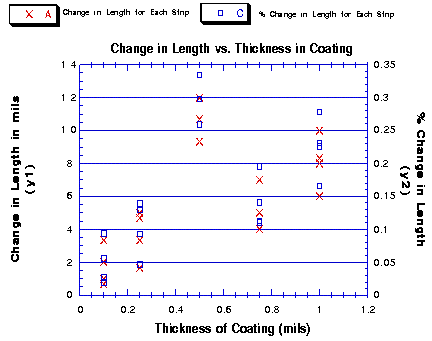
PHENIX-MVD-95-12
PHENIX Note #226
The motivation for these tests is to determine what thickness of parylene should be applied to the Rohacell cages in the MVD assembly. As the detector has mass restrictions, it was studied how the thickness of Parylene affects the mass of Rohacell. Measurements were performed to study how the mechanical robustness of the Rohacell increases with Parylene thickness. This is of interest as the Rohacell has a tendency to "flake" when it comes into contact with another surface. Finally, the parylene-coated Rohacell samples were exposed to a changing environment to determine whether the parylene made the Rohacell less hygroscopic. The Rohacell has been shown to expand and contract depending on the relative humidity of its environment. Physics and mechanical tolerances exist to which the Rohacell is not to exceed. Details on Rohacell's sensitivity to a changing environment can be found in PHENIX-MVD-95-11.
Twenty strips of Rohacell, measuring 4 x 1/8 x 1/4", were sent to Paratronix, Inc., in Attleboro, Massachusetts to have various thicknesses of Parylene coating applied. Five thicknesses were requested: 0.10 mil, 0.25 mil., 0.50 mil, 0.75 mil, and 1.0 mil.
Figures 1 and 2 show the change in length of the strips as a function of Parylene thickness. In general, the length of the strip increased as the Parylene thickness increased. The 0.50mil coated strips deviated from the linear relationship between change in length and thickness, indicating that these strips might have been exposed to a harsher environment while at Paratronix.
Figures 3 and 4 show the change in mass of the strips as a function of Parylene thickness. There is a linear relationship between mass increase and thickness of Parylene coating.

Figure 1. Change in length of each strip. The y1 axis shows the change in length in mils and the y2 axis shows the percent change in length.
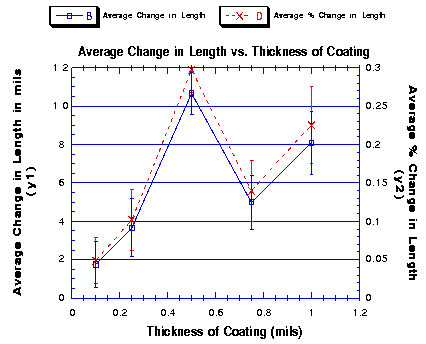
Figure 2. Change in length. The y1 axis shows the average change in length for strips as a function of coating thickness. The y2 axis shows the percent average change in length as a function of coating thickness.
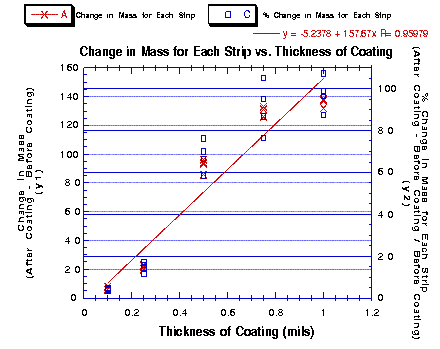
Figure 3. Change in mass for each strip. The y1 axis shows the change in mass in units of milligrams. The y2 axis shows the percent change in mass as a function of coating thickness. The data has been fit with a straight line.
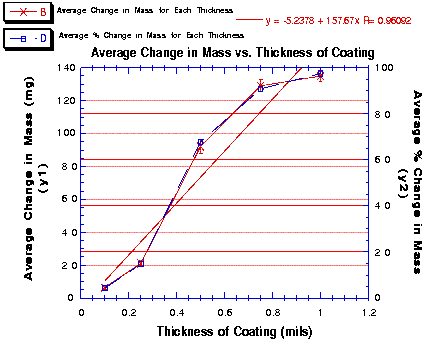
Figure 4. Average change in mass. The y1 axis shows the average change in mass for strips as a function of parylene thickness.. The y2 axis shows the average percent change in mass as a function of parylene thickness. This data has been fit to a straight line.
The graph and table in figure 5 show the average number of flakes counted from each type of strip. The 0.10mil strip did not differ significantly from the control strip (no parylene coating) and therefore did not increase the mechanical robustness of the Rohacell. All strips coated with a Parylene thickness of 0.25mil or more did increase the mechanical robustness of the Rohacell. However, there was no significant difference in robustness between the strips coated with 0.50, 0.75, and 1.00 mil thicknesses of Parylene. Consequently, in terms of increasing mechanical robustness, the 0.25 or 0.50mil thickness of Parylene is recommended.
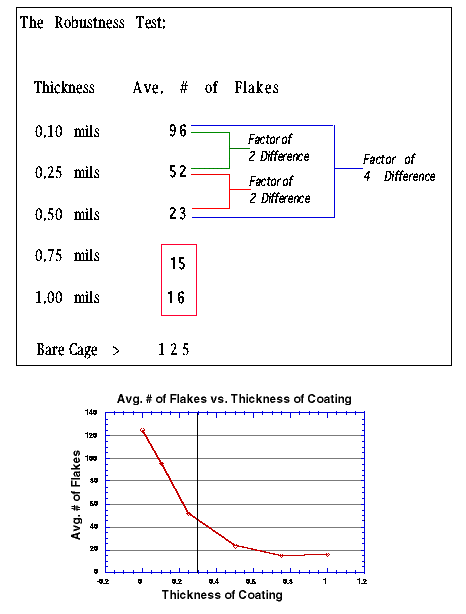
Figure 5. Average number of flakes as a function of parylene thickness.
Figure 6 shows a comparison between the control strip and the 0.25mil coated strips when exposed to a changing environment. The 0.25mil strips do not strongly influence the response of the Rohacell to the varying relative humidity; the 0.10 mil coated strips behaved similarly as the control strips. Figure 7 shows a compilation of the 0.5, 0.75 and 1.0mil strips as well as the control strips. These three thicknesses of Parylene lead to a significant decrease in response of the Rohacell to changes in relative humidity. Note that there is not a significant difference between the three thicknesses, making it difficult to justify a thicker coating (and thus larger mass increase) than the 0.5 mil coating in terms of environmental stability. The 0.50mil Parylene coating decreases the response of the Rohacell to a changing environment by an approximate factor of two. Table 1 shows the maximum percent change in length that the strips underwent when exposed to a changing environment.
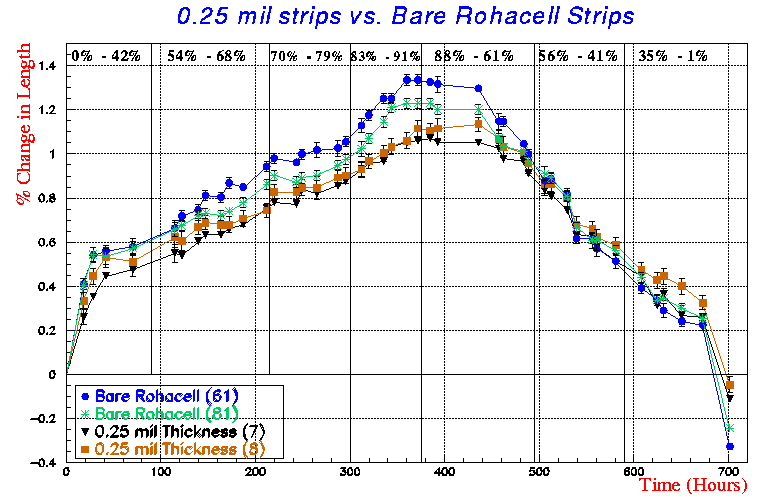
Figure 6. Percent change in length as a function of time for control strips and 0.25mil coated strips.
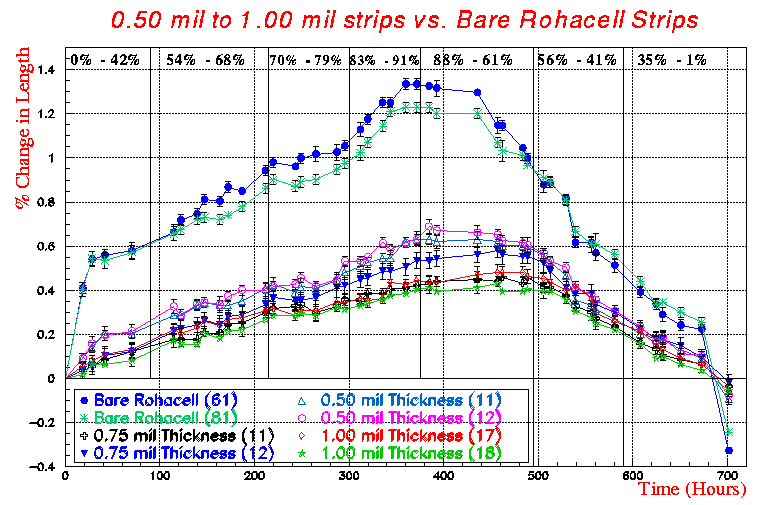
Figure 7. Percent change in length as a function of time for control strips, 0.50, 0.75 and 1.0mil coated strips.
| Strip Number | Coating Thickness (mil) | Max Percent Change |
|---|---|---|
| 61 | Bare | 1.32 |
| 81 | Bare | 1.23 |
| 13 | 0.10 | 1.24 |
| 14 | 0.10 | -- |
| 7 | 0.25 | 1.07 |
| 8 | 0.25 | 1.24 |
| 11 | 0.50 | 0.63 |
| 12 | 0.50 | 0.67 |
| 3 | 0.75 | 0.46 |
| 4 | 0.75 | 0.58 |
| 17 | 1.00 | 0.48 |
| 18 | 1.00 | 0.43 |
Figure 5 indicates that the Rohacell becomes mechanically more robust as the thickness of Parylene coating is increased. The most dramatic results were obtained with the 0.50, 0.75, and 1.0mil coatings. As there was not a significant difference between these three coatings, it is recommended that we utilize the 0.50mil coating to increase mechanical robustness of the Rohacell.
Figures 6 and 7 show that the Parylene coating makes the Rohacell less sensitive to a changing relative humidity. Again, the most dramatic differences were observed with the 0.50, 0.75 and 1.0mil coatings, with no significant differences between the three. In terms of environmental stability, it is recommended that we utilize the 0.50mil Parylene coating.
It has been shown that a coating of Parylene can make Rohacell more mechanically robust and less sensitive to a changing environment. In choosing an appropriate thickness to apply to the Rohacell cages, one must consider the effectiveness of the compound in adding mechanical robustness and decreasing hygroscopic behavior, while adhering to the MVD mass restrictions. Therefore, it is recommended that a 0.50mil coating of Parylene be applied to the Rohacell. This is the lightest weight coating which still leads to dramatic results in terms of mechanical and environmental stability.